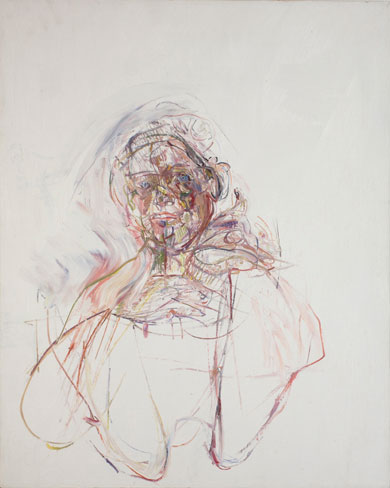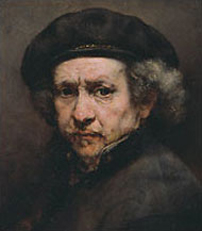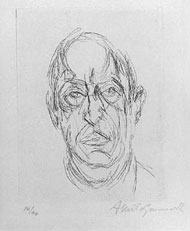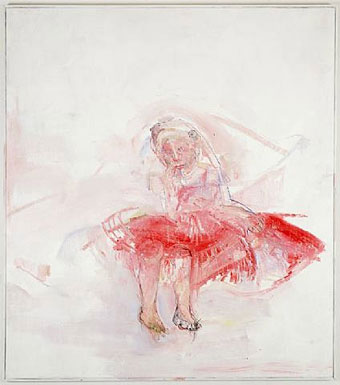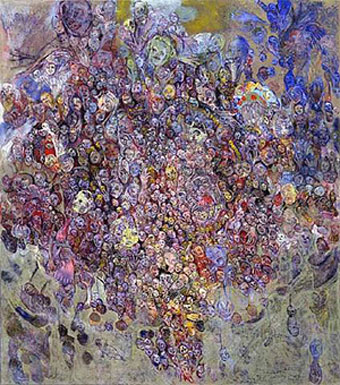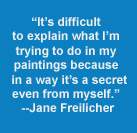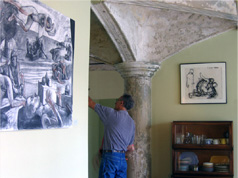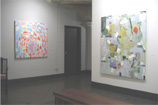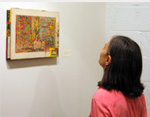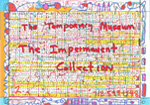
|
|
|
|||||||||
| ||||||||||
I regularly admire the Rembrandt/Giacommetti half drawn/half painted technique in this painting. |
||||||||||
|
||||||||||
It looks like Judy divided a face into tiny parts, looked at some of them for an extended length of time, threw away a few and then hastily reassembled the rest. I was sitting here idly trying to read the expression: judging? wise? abstracted? and realized she looks like my old therapist, Georgette. What a wonderful woman she is. She had developed the art of listening to such a high point that an idiot, speaking, could actually hear herself. This painting is kind of a drawing. The eraser was a one and a half inch brush loaded with white paint. It is part of a series that Judy made early in the century in which she painted a single figure on a white canvas every day and at the end of the day, or perhaps the next morning, she decided if it was finished. If not, she painted out the whole painting with white or scraped it off and started again. This is another painting that was painted in this way: |
||||||||||
|
||||||||||
| RED DRESS, 1999, 90" x 80", oil on canvas | ||||||||||
She developed a wet on wet technique which mimics or evokes the fluidity of expression that plays on the human face. The White Paintings have the feeling of self portraits—not that she used a mirror, though. In more recent works, there are multiple faces and the way the paintings are made is very different. In a way, the White Paintings have multiple faces too, but they are superseded by the face on top of them in a quest to find one perfect expression of the artist’s intention. I’m not sure that “perfect” is the right word but it’s the closest thing I could come up with. In the following painting, the faces are added, nothing is subtracted. |
||||||||||
|
||||||||||
| UNTITLED, 2004, 88.25" x 77", oil on canvas | ||||||||||
As a side note, both of these methods of finding an image are in continuous use throughout the history of painting. In the transparent media (ink and watercolor) it is all addition. In the opaque and semitransparent media like oils and acrylic, it is part of the temperament of the painter. For example and with exceptions, Matisse, Picasso, Giacommetti and Mitchell constantly destroyed and rebuilt; Seurat, Klimt, and Pollock added. |
||||||||||
| To see more of Judy Glantzman's work at Betty Cunningham Gallery | ||||||||||
| Forward to the next painting in the collection | ||||||||||
| Back to the My Collection home page | ||||||||||
